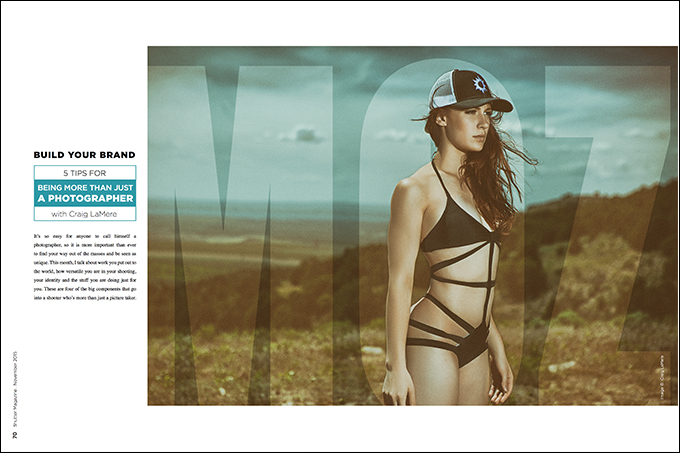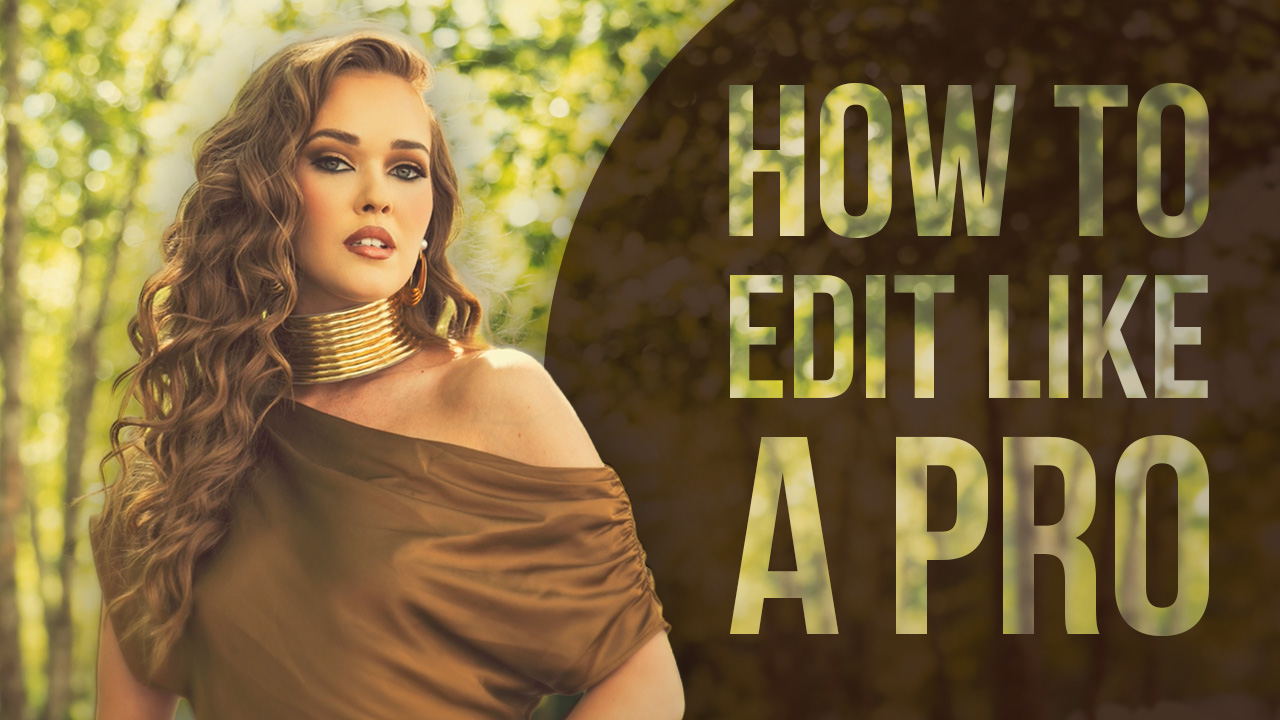Build Your Brand: 5 Tips for Being More Than Just a Photographer with Craig LaMere
It’s so easy for anyone to call himself a photographer, so it is more important than ever to find your way out of the masses and be seen as unique. This month, I talk about work you put out to the world, how versatile you are in your shooting, your identity and the stuff you are doing just for you. These are four of the big components that go into a shooter who’s more than just a picture taker.
Your Work
Your work is your introduction to the world. It really is your calling card and what potential clients are attracted to first. One of the best ways to separate yourself and be more than just any old shooter in your area is to have work that is on another level from most of the other work in your market.
This could be because of the locations you use, the type of lighting you use, how you process images or all of the above. No matter the difference, make sure you are doing something to be different. If you are shooting the same, processing the same, using the same filters, you are setting yourself up for a pretty hard time because you are producing a mass product. Mass products can be sold in volume at a lower price. If your customers can get your product from 50 other shooters in your area, they are going to get it for the cheapest price they can.
Versatility
Just about every single human being is a photographer. Whether they use a DSLR, a point-and-shoot or a phone, everyone is snapping images. At no time in history has it been easier for people to become photographers. I can’t even imagine the number of images the average person sees in the course of a day, between Facebook, Instagram, Snapchat and Pinterest.
Pro shooters are always stressing about how this glut affects their business. I would argue it’s not the number of shooters in their area, but rather the skill level and versatility—or lack of it—that’s hurting a lot of shooters. If you put all your eggs in one basket and decide you are only shooting one or two ways or only shooting one or two genres, you are walking away from business—or, I should say, business is walking away from you. The more versatile you are, the better able you are to take advantage of the opportunities that will come your way.
It is way easier to get business from existing clients than always having to find new ones. Do a great job for a client, and you’ll see that client again. If you’re a one-trick pony, you’ll lose your hard-earned clients. Being versatile does not mean you have to market that you shoot everything. It just means you can shoot everything if you need to. You’re a reliable, go-to resource for your clients, and that is big.
Finding Your Identity
One of the most important things a shooter can do to take herself out the pool of millions and millions of generic shooters is to create a distinct identity that clearly defines who she is and what she has built. Some people call this branding. But identity is more than a brand in our industry. We artists are not only creating products to sell to the public; we are also selling ourselves to the public.
When you create a brand, you are creating an idea about your business and your products. But when you create an identity, you are creating a persona. Your persona is your personal connection to the world. This is why identity is far more powerful than a brand—it’s that personal connection that stirs an emotional response toward not just your work but to you as the creator of the work.
Nike is one of the strongest brands on the planet. Its logo is so recognizable that it transcends all continents, languages and people. Nike could put that swish on a pile of poop, and someone out there would buy that poop because it is Nike poop. Even with the global reach Nike has, could most people name the owner or founder of Nike? If the owner of Nike were sitting next to you on a plane, would you automatically know who it was? I would bet my last dollar most of you would not. I know I wouldn’t.
Apple, on the other hand, has always had something Nike never did: a very clear captain of the ship. Nike has had great spokespeople but never a Steve Jobs. Even after his passing, Jobs is still the captain at Apple. He was, is and always will be synonymous with Apple. His philosophies and ideals were the company, and he was the identity of Apple. In death, it could be argued Jobs has become even more of an icon for the company.
Shooting for Yourself
One of the very best things a photographer can do to ward off boredom and stagnation is to shoot personal work. Many full-time photographers, for various reasons, never take time to shoot for themselves. The rampant discontent is obvious from all my speaking and teaching engagements. I always ask people how many shoots a month they do just for themselves. The answer is usually very few, if any.
The one commonality between shooters is that they all picked up a camera, discovered they loved it, got better and better at it, fell in love more and more with the images they were producing, and decided they would like to make their living doing what they loved. Isn’t that the dream of everyone?
The irony of what I am seeing out there is that the more successful that full-time shooters become, the less they enjoy photography. Because they aren’t enjoying shooting as much, they and their work stagnate. I don’t know any shooters who are in the business just to create revenue. Because there really are no places that teach people the reality of owning a studio or the reality of the business of being a full-time shooter, we all find out quickly that this is a very hard industry to make a living in. It’s easy to get bogged down, to become too busy for anything other than client work, and to stop shooting personal projects.
That’s why full-time shooters become disenchanted. The lack of personal shooting can stunt your artistic growth. You’ll cease to fulfill your creative needs. When that happens, many shooters go into autopilot mode. That is not to say the work is not at a high level. It just means it soon becomes the same work over and over again.
If you fall into this category, take some time to shoot something just for you a few times a month. You will see a dramatic change in yourself, and your work will reflect it.





This Post Has 2 Comments
Ooo this is spot on!
I agree.